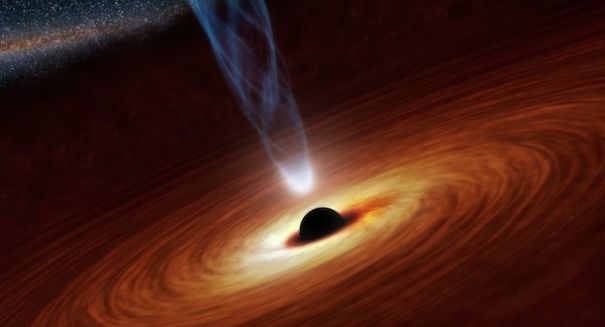
This black hole has a mass of 7 billion suns, and it's changing the way scientists think about how galaxies develop.
Astronomers were stunned to discover an incredibly massive black hole recently that is accompanied by a rather average galaxy, a bizarre finding that may force scientists to change the way they think about how galaxies develop.
The black hole has 7 billion solar masses, making it one of the largest ever discovered, but rather than having a proportionally large galaxy around it, it actually has a fairly small galaxy encircling it, according to an Astronomy.com report.
Using the W. M. Keck Observatory’s 10-meter Keck I Telescope in Hawaii, and international team of scientists spied galaxy CID-947, about 11 billion light-years away, making it just a couple billion years removed from the Big Bang. The galaxy has a fairly typical size, but the black hole at its center is of an incredible size. In most cases, black holes have a mass of less than 1 percent of the galaxy, and scientists have always believed that galaxies necessarily develop proportionally to the size of the black hole at their center. But the black hole in this galaxy makes up 10 percent of the host galaxy.
This isn’t a temporary situation either, scientists believe. Although it’s possible that the galaxy will continue to grow, this disparity isn’t likely to change much, according to the report.
The astronomers believe that this situation could have come about because the black hole grew too quickly for the host galaxy, something that scientists hadn’t considered before and may change the way they think about galaxy evolution.
It was an incredibly surprising revelation for the astronomers, so much so that two scientists attempted to independently verify the measurements of CID-947 independently, and were able to do so.